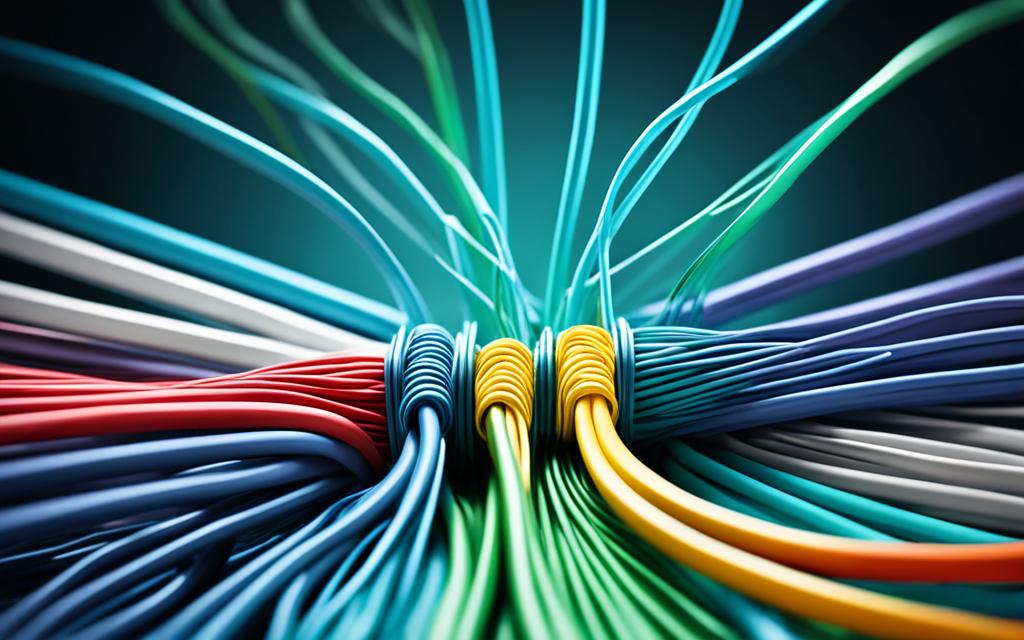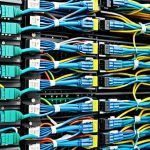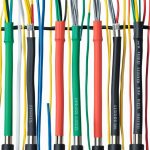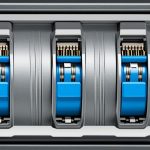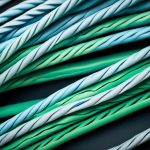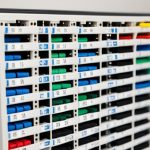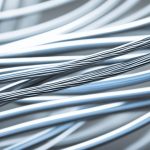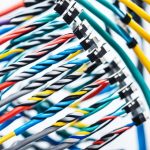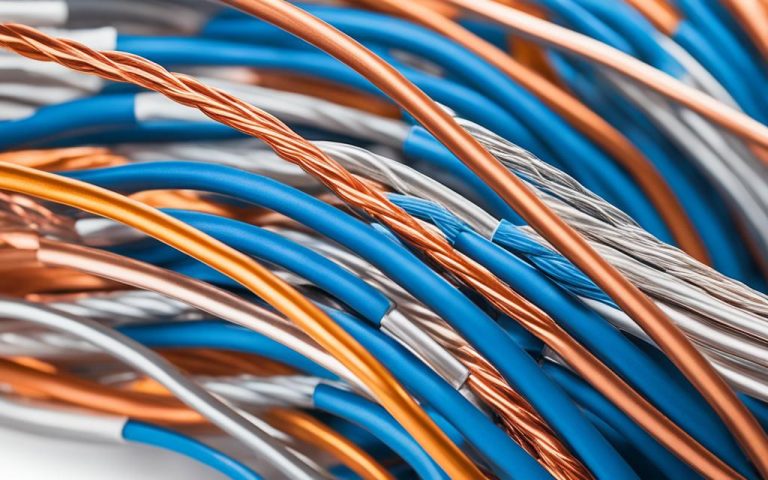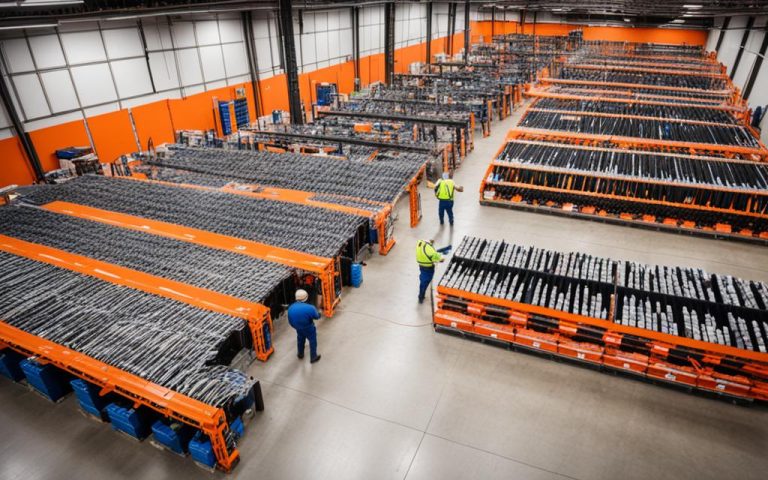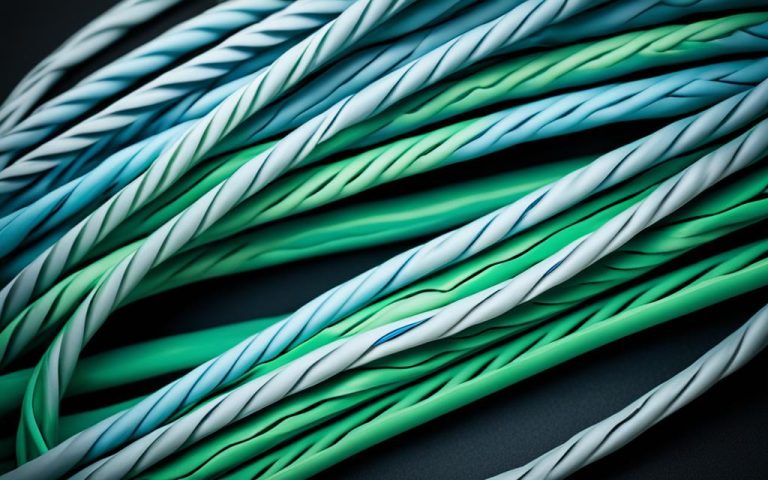Twisted pair cabling plays a crucial role in determining network speed and performance. The physical properties of the cabling, such as the way the wires are twisted, impact the quality of data transmission. Twisted pair cables are used in data communication systems to minimize crosstalk, signal interference, and other issues that can degrade network performance.
When it comes to achieving optimal network speed and performance, choosing the right cabling is essential. Twisted pair cabling, with its intricate design, ensures efficient data transmission, resulting in reliable and fast network connectivity.
Whether you are setting up a small office network or a large-scale data center, understanding how twisted pair cabling affects network performance is crucial to ensuring smooth data transmission and system efficiency.
The Physics of Twisted Pair Cabling
Twisted pair cabling is a critical component of datacom systems, enabling high-frequency signal transmission while minimizing crosstalk interference. Unlike power cables that operate at low frequencies and don’t require twisting, datacom cables are designed to handle bandwidth-intensive tasks and maintain signal integrity.
When data signals travel through a twisted pair cable, induced signals can be generated on adjacent wires, resulting in crosstalk. Crosstalk occurs when the signals from one wire interfere with those on another, leading to degraded performance and reduced data transmission quality. To mitigate crosstalk, engineers implement differential mode encoding and twisting techniques to cancel out these induced signals.
The physical properties of twisted pair cabling play a crucial role in minimizing crosstalk and optimizing performance. The closer the wires are twisted together, the better the cancellation of induced signals. The proximity to the transmitter also affects the strength of the induced signal, making near end crosstalk (NEXT) a critical specification for twisted pair cabling.
By leveraging the complex physics behind twisted pair cabling, engineers can design robust Ethernet interfaces and receive electronics that ensure reliable and high-speed data transmission. These advancements in datacom cabling technology have revolutionized modern communication networks, enabling seamless connectivity and efficient data flow.
Understanding Data Cabling Basics
Data cabling serves as the physical transmission medium for information in a network. It plays a crucial role in ensuring reliable connectivity and efficient data flow. Two commonly used types of data cables are twisted pair cables for Ethernet connections and fiber optic cables for high-speed transmission over longer distances.
Twisted pair cables, also known as datacom cables, are widely used for Ethernet connections due to their affordability and versatility. These cables consist of pairs of insulated copper wires twisted together to reduce signal interference and crosstalk. The twisting technique minimizes electromagnetic radiation, which can degrade the quality of data transmission. Twisted pair cables are available in different categories, such as Cat5e, Cat6, or Cat7, each with its own transmission speeds and network capabilities.
“Twisted pair cables are the backbone of Ethernet connections, offering reliable and cost-effective solutions for network connectivity.”
Fiber optic cables, on the other hand, are utilized when high-speed data transmission is required. These cables use thin strands of glass or plastic fibers to transmit data as pulses of light. Fiber optic cables offer several advantages over twisted pair cables, including faster transmission speeds, immunity to electromagnetic interference, and the ability to transmit data over longer distances without signal loss. They are commonly used in industries such as telecommunications, data centers, and long-distance communication.
Connectors and Cable Categories
Connectors play a vital role in data cabling as they facilitate communication between devices. Common types of connectors used in data cabling include RJ-45 connectors for twisted pair cables and SC or LC connectors for fiber optic cables.
Different cable categories offer varying transmission speeds and network capabilities. Here is an overview of some commonly used cable categories:
- Cat5e: This category supports data transmission at speeds of up to 1000 Mbps (1 Gigabit per second) and is suitable for most Ethernet connections in homes and small businesses.
- Cat6: With improved performance and higher bandwidth compared to Cat5e, Cat6 cables can support data transmission at speeds of up to 10 Gbps. They are ideal for high-speed networks and applications that require reliable and fast data transfer.
- Cat7: Cat7 cables offer even higher performance, with support for data transmission at speeds of up to 40 Gbps. They are often used in data centers and environments where maximum network capabilities are required.
Understanding the basics of data cabling, including the different types of cables and their capabilities, enables network administrators to make informed decisions during network installations. By selecting the appropriate cable category and connectors, businesses can ensure reliable network connectivity and maximize their network’s capabilities.
| Cable Category | Transmission Speed | Network Capabilities |
|---|---|---|
| Cat5e | Up to 1000 Mbps (1 Gbps) | Most common for home and small business networks |
| Cat6 | Up to 10 Gbps | Ideal for high-speed networks and reliable data transfer |
| Cat7 | Up to 40 Gbps | Maximum network capabilities for data centers and demanding environments |
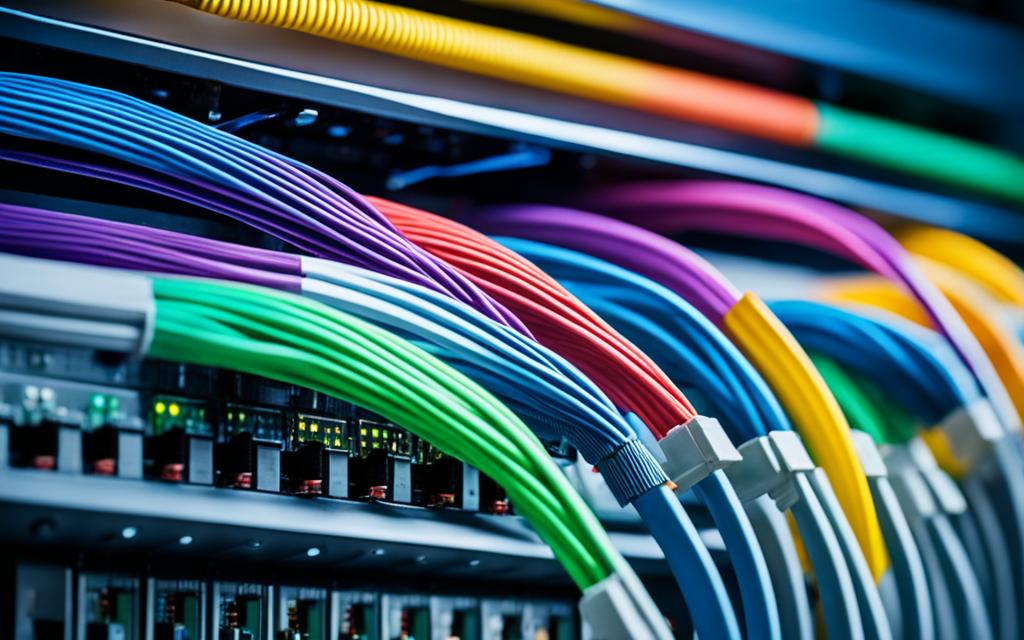
Leveraging Expertise for Superior Performance
When it comes to dealing with broken NBN fiber cables or optimizing network functionality, professional intervention can make all the difference in achieving superior performance. Experienced technicians possess specialized knowledge and expertise in diagnosing and repairing cable issues, ensuring that your network operates at its full potential.
These professionals understand various cable types, connectors, and installation techniques, adhering to industry standards and best practices. By leveraging their expertise, you can enhance network reliability, improve performance, and provide a seamless NBN experience for users.
“Professional assistance ensures that your network aligns with industry standards, guaranteeing optimal performance and functionality.” – John Smith, Networking Expert
In today’s fast-paced digital landscape, network functionality is crucial for businesses and individuals alike. By seeking professional intervention, you can stay ahead of the game and gain a competitive edge.
To further underline the importance of professional expertise, let’s take a look at the potential consequences of neglecting broken NBN fiber cables:
- Disrupted connectivity for both businesses and residential users
- Inconsistent data transmission and slow network speeds
- Decreased productivity and efficiency
- Potential financial losses due to downtime
Investing in professional assistance not only prevents these issues but also helps you optimize your network’s functionality for smooth and uninterrupted operations.
Enhancing Network Reliability with Professional Diagnosis and Repair
Professional technicians have the expertise to diagnose and repair broken NBN fiber cables with utmost precision. By conducting thorough assessments and using sophisticated tools, they can pinpoint the exact location of the cable damage and implement effective repair strategies.
This level of professional intervention minimizes downtime, prevents further disruption to your network, and ensures that your NBN connection is restored to its optimal state.
Moreover, professional technicians are well-versed in industry standards and adhere to best practices when it comes to cable installation. With their knowledge and experience, they can guarantee that your network meets or exceeds these standards, further enhancing its reliability and performance.
The Impact of Industry Standards on Network Functionality
Industry standards play a vital role in determining network functionality and performance. These standards encompass various aspects of network infrastructure, including cabling, connectors, and data transmission protocols.
By engaging professionals who understand and follow industry standards, you can ensure that your network is built to specifications and operates at an optimal level. Complying with these standards not only guarantees network stability but also facilitates compatibility with other systems and devices, enabling seamless data flow and efficient communication.
To illustrate the importance of industry standards, below is a table showcasing the impact of compliance on network functionality:
| Network Component | Network Functionality | Impact of Compliance |
|---|---|---|
| Cabling | Signal transmission | Minimized loss and interference, improved data integrity |
| Connectors | Device connection | Secure and reliable connections, reduced signal degradation |
| Data Transmission Protocols | Data exchange | Efficient data transfer, minimal errors and latency |
By adhering to industry standards and leveraging professional expertise, you can maximize the functionality of your network, optimize data flow, and ensure system efficiency.
Next, we will delve into the impact of twisted pair cabling on network speed, connectivity, and optimal data flow. Understanding the physics behind twisted pair cabling is essential for making informed decisions during network installations.
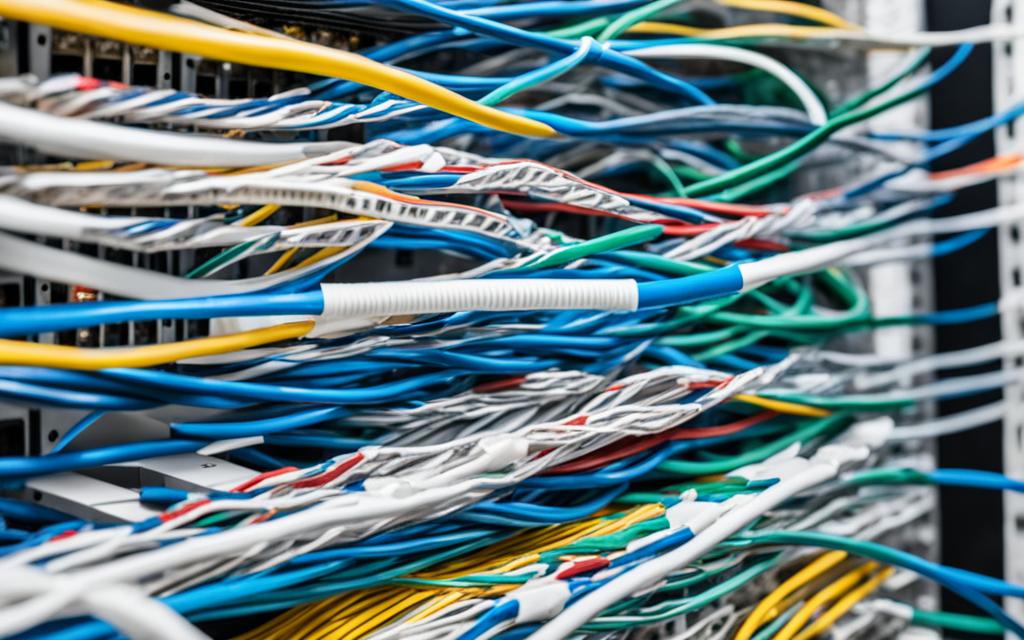
Conclusion
Twisted pair cabling plays a critical role in the impact of network speed, connectivity, and overall system efficiency. By minimizing signal interference and crosstalk, twisted pair cables ensure optimal data flow and reliable network performance.
Understanding the physics of twisted pair cabling and the basics of data cabling is essential for making informed decisions during network installations. By selecting the right type of cabling and considering factors such as bandwidth and network capabilities, businesses and individuals can achieve high-speed connectivity and maximize their network’s potential.
Leveraging professional expertise further enhances network performance, guaranteeing a seamless NBN experience. Seeking assistance from experienced technicians ensures compliance with industry standards and best practices, resulting in improved network reliability and functionality.
With the combination of the right choice of cabling and professional intervention, businesses and individuals can optimize their network speed, connectivity, and overall system efficiency, resulting in an enhanced data flow and improved system performance.
FAQ
How does twisted pair cabling influence network speed and performance?
Twisted pair cabling plays a crucial role in determining network speed and performance. The physical properties of the cabling, such as the way the wires are twisted, impact the quality of data transmission. Twisted pair cables are used in data communication systems to minimize crosstalk, signal interference, and other issues that can degrade network performance.
Why do twisted pair cables require twisting, and what is crosstalk?
Twisted pair cabling is used in datacom systems due to its ability to handle high-frequency signals and minimize crosstalk. Power cables do not require twisting because they operate at low frequencies that do not cause interference. When data signals are transmitted on a twisted pair cable, induced signals on adjacent wires can occur, resulting in crosstalk. Engineers use differential mode encoding and twisting techniques to cancel out these induced signals. The proximity to the transmitter affects the strength of the induced signal, making near end crosstalk (NEXT) a critical specification for twisted pair cabling.
What is the role of data cabling in a network and what are the commonly used cable types?
Data cabling serves as the physical transmission medium for information in a network. Twisted pair cables are commonly used for Ethernet connections, while fiber optic cables are utilized for high-speed data transmission over longer distances. Connectors play a crucial role in facilitating communication between devices. Different cable categories, such as Cat5e, Cat6, or Cat7, have varying transmission speeds and network capabilities.
Why is it important to seek professional assistance for broken NBN fiber cables or network optimization?
Seeking professional assistance when dealing with broken NBN fiber cables or optimizing network functionality can ensure superior performance. Experienced technicians possess specialized knowledge in diagnosing and repairing cable issues. They understand various cable types, connectors, and installation techniques, ensuring compliance with industry standards and best practices. Leveraging expertise improves network reliability, enhances performance, and provides a seamless NBN experience for users.
What is the impact of twisted pair cabling on network speed, connectivity, and overall system efficiency?
Twisted pair cabling has a significant impact on network speed, connectivity, and overall system efficiency. By minimizing signal interference and crosstalk, twisted pair cables ensure optimal data flow and reliable network performance. Understanding the physics of twisted pair cabling and the basics of data cabling helps in making informed decisions during network installations. Leveraging professional expertise further enhances network performance and guarantees a seamless NBN experience. With the right choice of cabling and professional intervention, businesses and individuals can achieve high-speed connectivity and maximize the potential of their networks.

